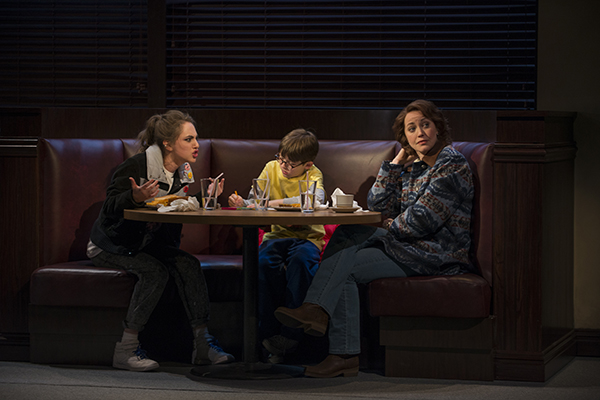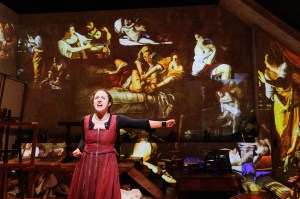
(© Michael Brosilow)
Steppenwolf's world premiere of ensemble member Tracy Letts' play, directed by artistic director Anna D. Shapiro, is a melancholy exploration of one woman's life. Mary Page Marlowe is less incendiary than some of Letts' and Shapiro's previous collaborations (most notably the Pulitzer-, Tony-, and Drama Desk-winning August: Osage County), choosing instead to dive deep into the psyche of a person who claims not to know herself at all.
Mary Page Marlowe tells a life story out of order, like flipping through random photographs of a woman's life. The audience begins to assemble a chronology: Mary Page is born. Her father, a World War II veteran, runs off. Her mother drinks. Mary Page gets a college education and begins a career in accounting. She lives in Ohio, but dreams of Paris. She marries three times. She has children. She has affairs. She has an analyst. She tries to connect with the people around her, but rarely succeeds. She suffers, she makes mistakes, and she tries to come to terms with her regret. It's not a particularly unique life, but putting the pieces together reveals Mary Page as a unique individual.
Six actresses share the title role. Their performances are so thoroughly unified that it is difficult to praise one above the other. Caroline Heffernan plays Mary Page at age 12, already wounded by the world. Annie Munch charms as Mary Page in college. Carrie Coon shows excellent range as Mary Page in her 20s and 30s. Playing Mary Page in two key scenes in her 40s, Rebecca Spence captures a woman adrift. Laura T. Fisher, Mary Page at age 50, has only one scene, but it packs a wallop. It is a testament to every actor playing the role that I was deeply relieved to see Blair Brown playing Mary Page enjoying a modicum of happiness, or at least contentment, in her 60s. Thanks in part to Linda Roethke's wonderful costume design, these six women coalesce seamlessly into the lifetime of one woman.
An additional 15 actors play the people that orbit Mary Page's life. The ensemble, totaling 21, never feel rushed or crowded in the 90-minute play. Each snapshot of Mary Page's life is allowed to unfold in its proper time, until the end, which comes suddenly and all too soon. Standouts from the ensemble include Amanda Drinkall as Mary Page's overwhelmed mother Roberta, Tess Frazer as Mary Page's batty college roommate Lorna, and Ian Barford as Ray, Mary Page's long-suffering second husband, whose single scene (with Fisher) is a master class in anger, desperation, and exhaustion.
Letts' script never gets bogged down in exposition, allowing each scene to reveal part of Mary Page's story at a natural pace. Director Shapiro creates powerful moments bookended by lovely transitions through time, aided by her excellent design team. The sets, by Todd Rosenthal, perfectly capture aesthetics ranging from a 1960s dorm room to the Naugahyde booth of a 1980s Denny's. Marcus Doshi's lights are appropriate for both the realism of the interior scenes, and the dreamy transitions.
Late in Mary Page's life, she mentions to her nurse (Sandra Marquez) that she has always enjoyed her work as a CPA. Appropriate, since doing strangers' taxes is like piecing together a portrait from puzzle pieces. A receipt here, a paystub there, and a person's life begins to take shape. Mary Page Marlowe is an elegantly constructed puzzle, and watching its pieces come together to reveal a portrait is a delight.











